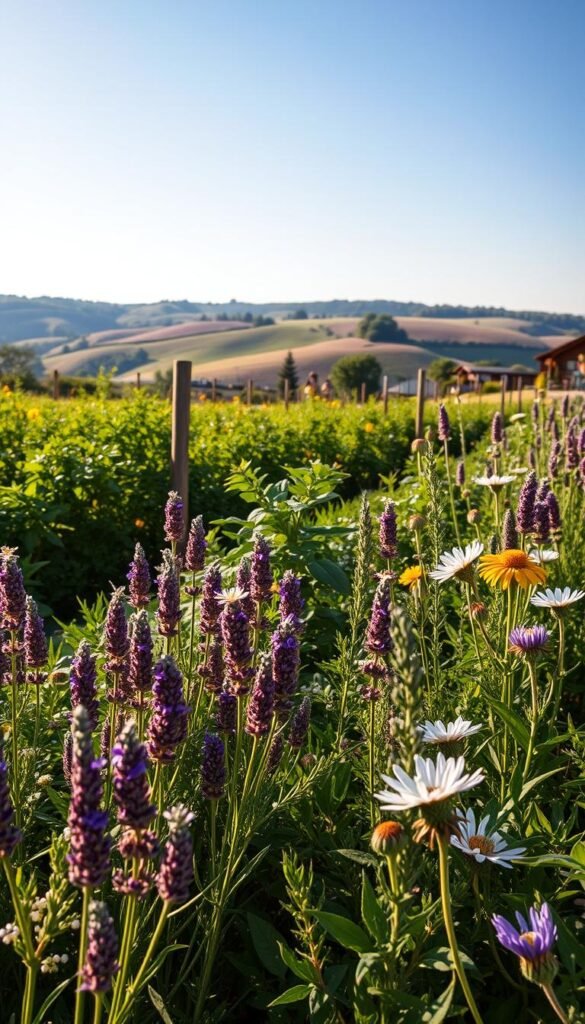For centuries, people have turned to nature’s pharmacy to support health and vitality. Today, science confirms what ancient traditions knew: certain plants offer remarkable healing properties you can harness right from your outdoor space. Growing these natural remedies puts you in charge of what goes into your family’s wellness routine.
Imagine stepping outside to harvest fresh ingredients for teas, salves, or tinctures. You’ll skip store-bought products filled with unknowns while saving money long-term. Many gardeners find the process itself calming – a green sanctuary that eases daily stress as you nurture your must-have plants for home wellness.
Your patch of earth becomes more than just pretty greenery. It’s a living connection to generations of herbal wisdom, now backed by modern research. From soothing skin irritations to boosting immunity, these multi-purpose garden allies serve countless needs.
Beyond personal benefits, cultivating these plants supports local ecosystems. You’ll attract pollinators while reducing plastic packaging from commercial remedies. It’s a practical step toward sustainable living that even beginners can master with basic care tips.
Ready to transform your outdoor area into a thriving wellness hub? Let’s explore which versatile specimens deliver the strongest results and how to integrate them seamlessly into your landscape.
Introduction to Medicinal Herb Gardening
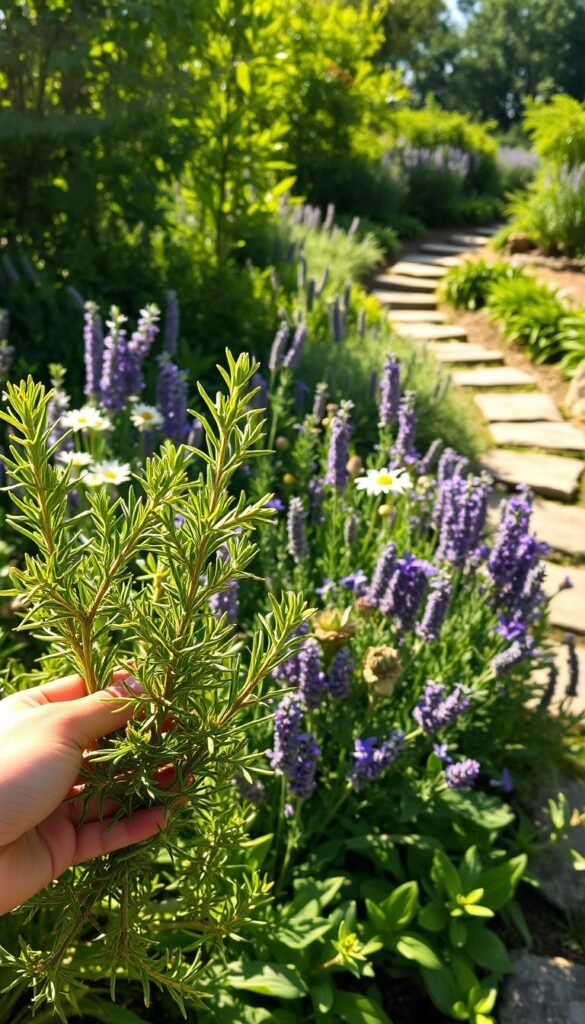
Long before pharmacies lined city streets, our ancestors cultivated green allies in backyard plots. Today’s research reveals why these healing plants endured through millennia – their compounds often outperform synthetic alternatives. This practice bridges ancient wisdom with modern self-care.
Discovering the Healing Benefits
Traditional cultures relied on plants like chamomile and echinacea for medicinal purposes, a tradition validated by recent studies. A 2022 NIH report found homegrown herbs retain 40% more active compounds than store-bought dried versions. You’re not just growing leaves – you’re nurturing nature’s medicine cabinet.
Modern families use these herbs for everything from bedtime teas to first-aid salves. Imagine treating minor cuts with fresh plantain leaves or boosting immunity with elderberry syrup from your patio pots.
Why Grow Your Own Herbs?
Commercial products often lose potency during processing and transport. When you control the soil and harvest timing, your herb garden becomes a quality assurance lab. No mystery pesticides – just pure, effective remedies for your family.
Beyond health benefits, gardening lowers stress hormones by 25% according to UCLA research. You’ll save money too – one $3 mint plant yields years of digestive aids. It’s practical magic that turns your windowsill into a wellness workshop.
Choosing the Right Medicinal Herbs for Your Garden
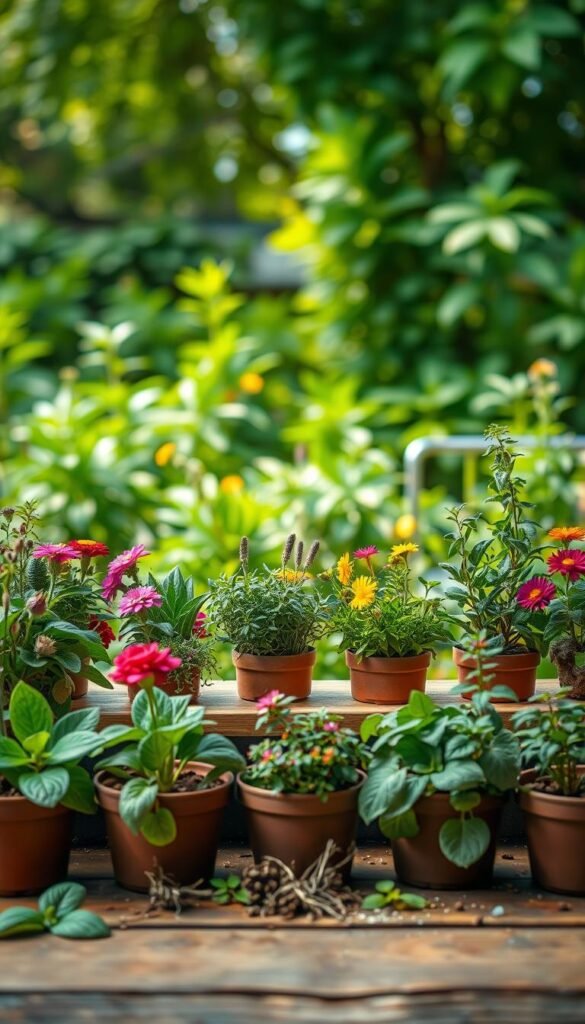
Cultivating herbs that match your lifestyle ensures a practical and thriving garden. Start by identifying which plants address your household’s frequent needs – whether that’s calming teas for stress relief or immune-boosting additions for cold season.
Herb Selection Criteria
Focus on three key factors: health priorities, growing conditions, and maintenance time. Create a shortlist from resources like 15 must-have species, then cross-reference with your USDA zone. Mint thrives in partial shade, while echinacea demands full sun.
| Health Focus | Space Needs | Care Level |
|---|---|---|
| Digestive Aid | 12″ spacing | Low |
| Immune Support | 18″ spacing | Moderate |
| Stress Relief | Container-friendly | Easy |
Considerations for Space and Care
Even small patios can host healing plants. Try vertical planters for thyme or chamomile. Check seed packets – perennials like lavender return yearly, while basil needs replanting. Group plants with similar water needs to simplify care.
Prioritize 2-3 versatile herbs your family will actually use. A rosemary plant serves as both seasoning and circulatory aid, making it doubly valuable. Track sunlight patterns for a week before planting – most healing herbs need 6+ hours daily.
Essential Medicinal Herbs Every Garden Should Include
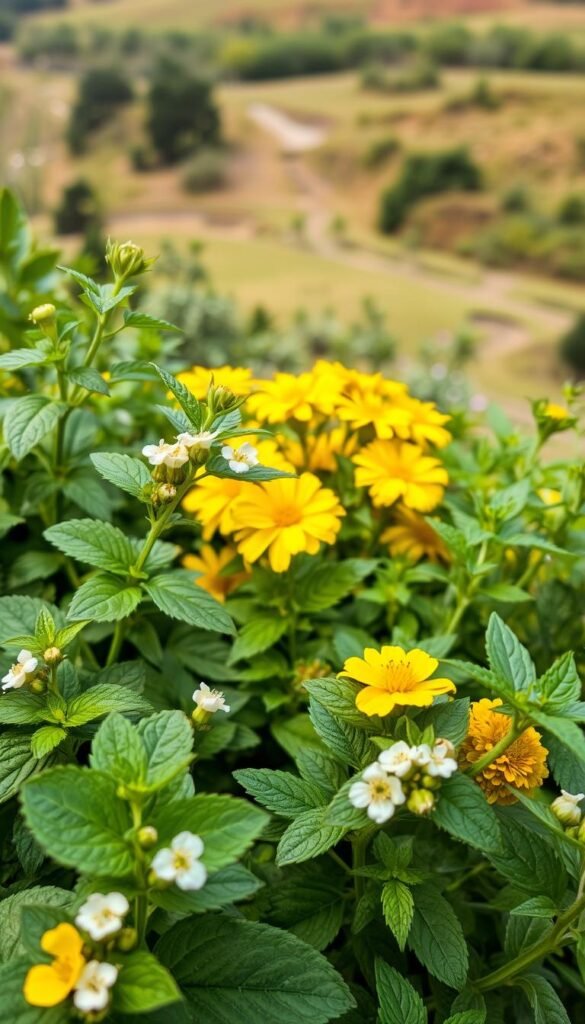
Your backyard can become a natural pharmacy with two multitasking plants. Lemon balm and calendula offer solutions for everything from bedtime routines to scraped knees. Their gentle effectiveness makes them perfect for families seeking safe, natural options.
Featured Spotlight: Lemon Balm and Calendula
Lemon balm shines as a mint-family superstar. Its citrus-scented leaves calm nerves and fight viruses. Crush a leaf and inhale for instant stress relief, or brew a tea to ease digestion. Kids love its mild flavor, making it ideal for bedtime drinks.
Calendula’s bright flowers work magic on skin. A 2021 study showed its extracts heal wounds 30% faster than standard creams. Use petal-infused oil for diaper rash or add dried blooms to container-friendly bath soaks.
| Plant | Top Uses | Growth Tip |
|---|---|---|
| Lemon Balm | Stress relief, fever reduction | Containers prevent spreading |
| Calendula | Skin repair, lymph support | Self-seeds freely |
Herbal Uses for Everyday Remedies
Make lemon balm ice cubes for summer drinks that double as anxiety soothers. Dry calendula petals for homemade salves – just mix with beeswax and olive oil. Both plants thrive with minimal care, rewarding you with year-round healing power.
For quick fixes, keep fresh lemon balm in your kitchen window. Apply calendula tea compresses to bug bites. These versatile herbs prove nature’s best remedies often grow right outside your door.
Building a Versatile Herb Garden: Culinary and Medicinal Uses
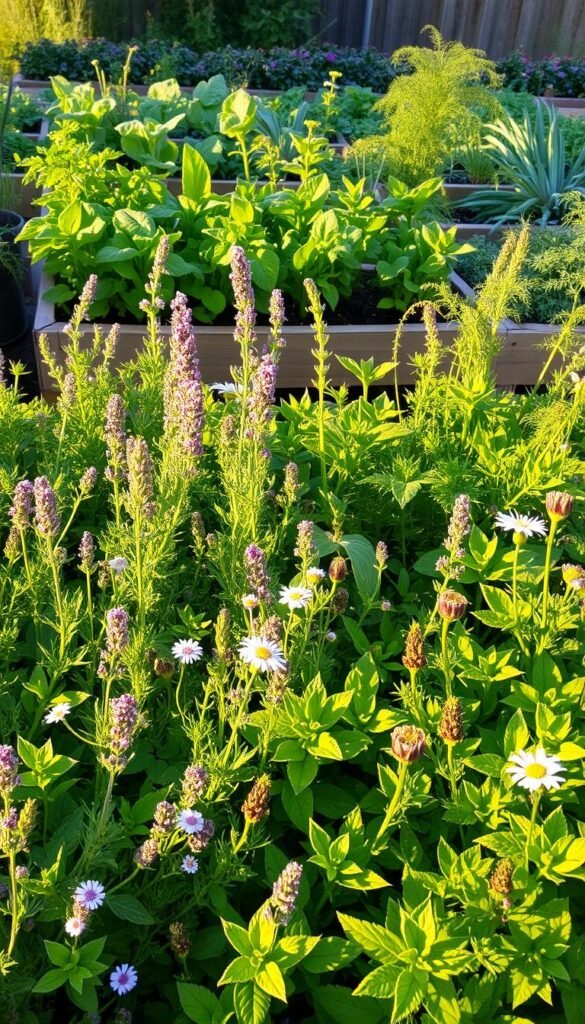
Your garden can be both a spice rack and a medicine cabinet with the right plants. Many kitchen favorites double as natural remedies, offering two solutions from one plant. This approach maximizes space while keeping your family healthy through everyday meals.
Dual-Purpose Benefits in the Kitchen and Pharmacy
Basil does more than elevate pasta sauces. Its leaves ease stomach cramps and reduce inflammation. Add fresh leaves to salads or steep them in tea for digestive relief.
Sage isn’t just for Thanksgiving stuffing. Studies show it improves memory and soothes sore throats. Try rubbing fresh leaves on gums or brewing a strong gargle.
| Herb | Kitchen Use | Health Benefit |
|---|---|---|
| Basil | Pesto, caprese salad | Reduces gas, fights bacteria |
| Sage | Stuffing, brown butter | Supports brain function |
| Oregano | Pizza seasoning, marinades | Fights colds, kills fungi |
Herbs That Enhance Flavor and Wellness
Oregano’s earthy flavor boosts soups while its oils combat infections. Dry extra leaves for winter immunity support. Lavender calms nerves in teas and enhances baked goods.
Preserve your harvest by freezing chopped herbs in oil cubes. This locks in flavor and medicinal properties. For year-round use, try growing herbs indoors with kids during colder months.
Roast chicken with rosemary to aid circulation. Stir thyme honey into tea for cough relief. These simple swaps make wellness part of daily routines.
Easy Grow Herbs for Gardening Beginners
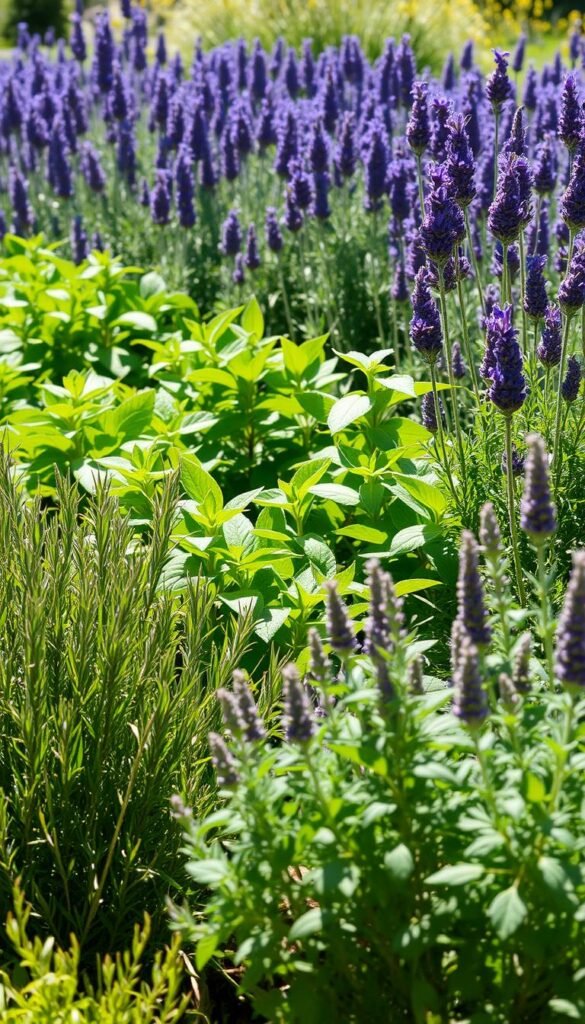
Starting your green journey doesn’t require expert skills – many resilient herbs practically grow themselves. These plants thrive where fussier specimens fail, making them perfect for first-time growers. With minimal effort, you’ll harvest leaves and flowers packed with wellness benefits.
Simple Tips for Novice Gardeners
Mint and chamomile are nearly indestructible starters. They bounce back from missed waterings and grow in poor soil. Calendula’s cheerful blooms self-seed freely, ensuring yearly returns with zero work.
Most herbs prefer gritty soil over rich compost. Mix sand into potting soil for better drainage – soggy roots are the #1 killer. For seeds, follow packet instructions closely. Basil germinates fast in warm soil, while parsley needs patience.
| Herb | Sun Needs | Water Frequency |
|---|---|---|
| Mint | Partial shade | Weekly |
| Chamomile | Full sun | When dry |
| Calendula | 6+ hours | Moderate |
Keep containers small to prevent overwatering. Try indoor herb growing for year-round access. Snip leaves often – regular harvesting encourages bushier growth. Your garden becomes a classroom where success breeds confidence.
Utilizing Herbs for Natural Remedies and Healing
Your kitchen shelf holds more than spices—it’s a first-aid kit in disguise. Many green allies tackle everyday health hiccups without harsh chemicals. Let’s explore simple solutions you can brew or blend in minutes.
Nature’s Quick Fixes
Yarrow works magic on cuts—crush fresh leaves to stop bleeding fast. Its feathery greens also break fevers when steeped as tea. For winter sniffles, simmer elderberries into syrup. Studies show it shortens colds by 3-4 days.
Peppermint isn’t just for fresh breath. Steep leaves to ease tummy troubles or rub oil on temples for headaches. Thyme fights infections—try gargling its tea for sore throats. Keep dried flowers like calendula for DIY salves that speed healing.
Mix honey with sage for cough relief. For chest congestion, inhale eucalyptus steam. These home remedies turn your garden into a wellness workshop. Always test small skin patches first and consult your doctor for serious issues.

